SARATOGA BUSINESS JOURNAL
VOL. 30 NO. 06

VOL. 30 NO. 06
BY PAUL POST
Jim Carey got up long before dawn, drove to Clifton Park and by 4 a.m. was fi rst in line to enter a new Bass Pro Shops, whose doors wouldn’t open for another twelve-and-a-half hours.
He maintained the vigil despite searing hot afternoon temperatures that soared into the 90s.
“I didn’t want to fight the crowds to get in,” the Albany resident said, smiling. “I love Bass Pro Shops and I was curious to see what they did with the building. It’s beautiful inside. It’s going to be good for the area. It’s going to bring a lot of people in.”
Carey, an avid hunter and fisherman, was joined by a huge throng curious to see the store’s many attractions such as a 25-yard indoor archery range; large colorful diorama of Split Rock Falls in the Adirondacks with water rushing into a 12,000-gallon educational aquarium; beautiful hand-painted, outdoorsthemed murals; and a wide variety of mounted wildlife.
The three-story building’s high, cathedrallike ceiling and décor is not unlike that of a grand old lodge found at some of America’s favorite national parks such as Glacier, Yellowstone and Yosemite.
The new Clifton Park store is the fourth Bass Pro Shops in New York, joining others in Utica, Auburn and Cheektowaga. The Springfield, Missouri-based fi rm has about 180 sites throughout the U.S. and Canada.
In recent months, destination retail locations have also opened in Duluth, Minn.; Tyler, Texas; St. Augustine, Fla.; and Spring, Texas.
“Each one is built unique to the area,” store General Manager Bryan Lalone said. “So here, when you walk in you get the feeling that you’re in the Adirondacks, with elements relative to this area.”
A Stony Creek native and 1994 Warrensburg High School graduate, he jumped at the chance to work for Bass Pro Shops, following a 27-year career with Walmart and Price Chopper/Market 32.
The 70,000-square-foot store, visible from

the Northway, is just off Exit 9 at 400 Clifton Park Center Road, on the site of the former Northstar Chevrolet.
Vendors representing a variety of interests from military veterans and conservation groups to energy drink products kept people busy while anxiously waiting for doors to open.
Bass Pro Shops promotes many types of conservation efforts. The store will host community events and outdoor education programming designed for families and children throughout the year, aligning with Bass Pro’s broader commitment to conservation and youth outdoor learning
The company is also a strong supporter of veterans organizations including Galwaybased Alliance 180, a non-profit that uses equine therapy to prevent suicide among veterans, fi rst responders and frontline healthcare workers impacted by traumatic events.
Alliance 180 was founded by Vietnam veter-
The 43rd Annual Saratoga Hospital Gala was attended by nearly 1,000 guests recently with an evening of poolside camaraderie, popular auction items, and record-breaking generosity, all in support of community health.
The event raised more than $495,000 net, with the highest grossing live auction in the gala’s history, bringing in $269,500.
Led by co-chairs Stephanie Collins and Cara Mildé, the gala was made possible through the dedication of a committed group of community leaders as committee members, the generous support of presenting donors and longtime hospital friends, Sonny and Julie Bonacio, and other valued donors and all in attendance.
Together, they helped create an unforgettable evening that showcased the power of community coming together to support accessible, high-quality healthcare.
Held at The Polo Meadow at Saratoga Casino Hotel, the celebration raised critical funds for Saratoga Hospital’s Community Benefit Programs, which help provide high-quality, accessible healthcare to thousands across the region. These include primary care, dental, behavioral health, and addiction medicine.
Funds also support initiatives such as the School Health Program, Family Medicine Residency, Health Home Program, and the Saratoga Backstretch Clinic.
Among the evening’s standout moments were two unique auction items donated by Stewart’s Shops: the chance to create and name your own Stewart’s ice cream fl avor. Each item sold for a remarkable $50,000, helping drive the live auction total to unprecedented levels.
“Th is event is a powerful reminder of what our community can do when we come together,” said Jill VanKuren, president and CEO of Saratoga Hospital. “The generosity shown at this year’s gala directly supports vital programs and services that make healthcare more accessible for all.”
Th is year’s gala featured 21 live auction items offering everything from one-of-a-kind experiences to adventurous getaways. Funds raised through the gala benefit Saratoga Hospital’s Community Benefit Programs and help train future physicians through the hospital’s Family Medicine Residency program.
To learn more or support Saratoga Hospital’s initiatives, visit https://shgala2025. givesmart.com
an Bob Nevins of Saratoga Springs, who turned out for the store’s grand opening.
“Th is is another jewel in the Capital District’s crown,” he said. “Th is kind of operation that supports all of the hunters and fishermen is sorely needed here. Bass Pro is about as good as you’re going to get. It’s worth a visit.”
Of course, the store is expected to provide a major economic boost to Clifton Park, Saratoga County and the North Country by promoting year-round outdoor recreational pursuits from ice fishing to hiking in the High Peaks.
The store has created jobs for up to 145 local workers, boosting household income and local consumer spending in the area.
Brian Carter, of thebasscast.com website says: “When a new store opens, it injects vitality into the surrounding economy. Jobs are created, tourism is fostered, and local businesses thrive. It’s not just the direct employment opportunities at the store itself but also the ripple
effect that benefits a myriad of other establishments. Restaurants, hotels, gas stations, and various retail shops experience an uplift as fishing enthusiasts come from near and far to visit the Bass Pro Shops mecca.”
In effect, a Bass Pro Shops store often serves as a catalyst for regional tourism, reinforcing the town’s identity as an outdoor and conservation hub. Th is can encourage long-term visitation and local event attendance.
The store has already triggered a significant upgrade in nearby highway infrastructure. In anticipation of greatly increased traffic, the Town of Clifton Park secured a $3.45 million state grant to construct a roundabout and sidewalks at Sitterly Road and Clifton Park Center Road, which enhances safety and accessibility in the retail corridor and mall area.
Such improvements benefit the entire town center by encouraging foot traffic and potential nearby retail growth.
Bass Pro Shops is owned by Johnny Morris, founder and lead outfitter, and his company, Great American Outdoors Group. He founded the company in 1972 and has remained its majority owner and CEO.
He also owns White River Marine Group, a leading boat manufacturer. In 2016, Bass Pro Shops acquired rival Cabela’s Inc. for $4.5 billion.
“Getting Bass Pro Shop to open in Clifton Park is a tremendous success story for the community, Saratoga County, and the region,” said Todd Shimkus, Saratoga County Chamber of Commerce president. “They are way more than just a retail superstore, making sure to offer recreational and entertainment opportunities creating a true destination that people will visit from near and far. No doubt they will help us to continue to ensure that Saratoga County’s economy continues to succeed, grow and thrive.”
Editor’s Notes 8/21/25: The August print edition omitted the byline of Paul Post. The byline has been restored to properly credit the author. Article has been updated to correct Morris’s title, Bass Pro Shops founder and chief outfitter, and added store locations.
Local author Elizabeth Macy has released her fourth children’s book, Lucky’s Adventure: The Saratoga Rescue, the first chapter book in the Lucky’s Adventures series for readers ages 7 to 11.
The story, based on the true events that inspired the original picture book, follows Lucky, a rescue dog who gets lost in Saratoga Springs. As the community searches for her, Lucky explores well-known locations including Saratoga Race Course, Congress Park, the State Park, downtown Saratoga and Saratoga Lake. The book includes 30 black-and-white illustrations and emphasizes themes of community, kindness and friendship.
A book signing and launch event is scheduled for Wednesday, Aug. 20, from 3 to 6 p.m. at the Saratoga Farmers Market as part of its Kids Club series.
A portion of sales will benefit Lucky Puppy Rescue. The book is available for pre-order at luckysadventures.net and will be available in local stores mid-August.
Most familiar for her colorful photography of Saratoga Race Course and her three prior picture books, Macy finds the inspiration for the series in her own rescue dog, Lucky. The book series originated in 2016 when Lucky got lost during the Thanksgiving break. A four-day community

The Saratoga Casino Hotel Foundation is accepting applications for its 2025 grant cycle through August 12. The Foundation supports public benefit organizations that improve quality of life, health, and well-being for Saratoga County residents.
Eligible applicants must be IRS-designated nonprofits offering programs that serve Saratoga County. Priority is given to proposals addressing problem gambling, youth programs, senior services, arts, recreation, and overall community enhancement.
“We take great pride in the strong partnership among the Saratoga County Board of Supervisors, the Saratoga Harness Horseperson’s Association, and Saratoga Casino Hotel,” said Foundation Treasurer Skip Carlson. “For more than two decades, our grants have supported organizations providing education, senior services, family assistance, food security, disability support, and aid for those facing domestic violence and addiction.”
Applications must be submitted electronically via the Foundation’s website, www.saratogacasinohotelfoundation.org, no later than Sept. 12.
The Foundation’s board will meet Oct. 1 to review submissions, and applicants will be notified by Oct. 8. Grant recipients will be formally recognized during the Saratoga County Board of Supervisors meeting on Oct. 21.
Since its founding, the Foundation has awarded nearly $500,000 to more than 200 local organizations. A list of past recipients and additional details are available online.
Arrow Bank National Association is pleased to welcome Debbie Reynolds as Vice President, Regional Manager.
In her new role, Reynolds will oversee branch operations and sales at Arrow Bank’s Capital Region locations, where the bank remains focused on business development and delivering exceptional service to the communities it serves. She will work closely with branch teams to drive performance,
support local engagement and foster meaningful client relationships across the region.
Reynolds brings more than two decades of leadership experience in retail banking, training and development and sales. Most recently, she served as Director of Training and Development at TCT Federal Credit Union, following leadership roles at Pearl Insurance and Citizens Bank, where she spent nine years as a Regional Manager.
A graduate of Herkimer County Community College with an associate degree in public relations, Reynolds is a native of Camden, N.Y., and a graduate of Camden Central School District. She is a certified notary public and holds an active NMLS license.
Deeply committed to giving back, Reynolds volunteers with Habitat for Humanity as a food drive volunteer, participates in Adopt a Soldier initiatives and is a regular runner in the American Heart Association 5K.
Meetings for August and September for the EDC and WCLDC:
August 20, 2025 EDC Board of Directors Meeting to be held in person at 11 South Street, Suite 201, Glens Falls at 8:00 a.m.
August 21, 2025 WCLDC Board of Directors
Meeting to be held in person at 11 South Street, Suite 201, Glens Falls at 11:00 a.m.
September 9, 2025 EDC Audit & Finance Committee Meeting 4:00 p.m.
September 16, 2025 WCLDC Business Review Committee Meeting 1:00 p.m.
September 17, 2025 EDC Board of Directors meeting 8:00 a.m.
September 18, 2025, WCLDC Board of Directors meeting 11:00 a.m.
Continued On Page 14








To address the growing mental health crisis and shortage of trained counselors, Maria College is introducing a Master of Science in Clinical Mental Health Counseling (CMHC) this fall. The program is designed to equip future counselors with the skills and experience necessary to make a meaningful impact in the field.
The 60-credit, graduate track features weekend classes combining in-person and hybrid learning. It is ideal for working professionals and career changers and can be completed in two or three years. The program meets the educational requirements leading to licensure as a mental health counselor in New York.
“With mental health issues, particularly among youth and first responders, increasing at critical levels, the need for skilled counselors has never been more urgent,” said Dr. Claudia Lingertat, founding director of the CMHC program. “Our program blends theory with hands-on experience. It offers a valuable pathway for individuals passionate about making a real difference treating mental health in New York and beyond.”
Graduates of the program will be prepared to work in a variety of settings, assisting individuals, youth, couples, and families in navigating mental health challenges. They may choose to open their own private practice or work in community agencies, including inpatient and outpatient clinics or residential treatment facilities, that support those facing mental health and substance use issues.
Core courses, designed to teach students





how to assess, diagnose, and treat a wide range of mental health issues, include clinical counseling skills, psychopathology, and substance use counseling. With a focus on culturally responsive, holistic, and evidence-based approaches, the curriculum addresses the unique needs of individuals, couples, families, and groups across the lifespan, while featuring courses like Counseling Children and Adolescents and Counseling Couples and Families. Students can also personalize their education with electives such as psychopharmacology and nature-based expressive arts.
In addition to rigorous coursework, students will gain hands-on experience through a 100-hour practicum and two 300-hour internships. These internships provide supervised real-world experience in settings like mental health agencies, substance abuse clinics, psychiatric hospitals and private practices, thereby ensuring graduates are ready for clinical work.
“We’re committed to a holistic approach to mental health, recognizing the deep connections between the mind, body, and spirit,” added Dr. Lingertat. “Our curriculum and clinical experiences are designed to prepare counselors who not only treat symptoms, but also promote overall wellbeing in their clients.”
While a background in psychology is an ideal fit for the program, students from diverse academic backgrounds — such as business, English, and more — are welcome, provided they have a passion for mental health.
Continued On Page 3








Pioneer, a leading financial institution in New York’s Capital Region, today announced it is partnering with USA Gas on a $4 million project to construct a new shared building in Clifton Park, NY. The new building on the corner of Fire Road and Route 146 will combine a redeveloped 5,000-square-foot USA Gas station and convenience store with a new 3,000-square-foot, full-service Pioneer branch.
Located just off the I-87 Exit 9 northbound ramp, the new Pioneer branch will include an Interactive Teller Machine (ITM) for extended-hours banking, private offices for consultations, and access to personal and business banking services. USA Gas will operate a convenience store offering fresh food, beverages and grocery items and a six-pump fueling station, with dedicated parking for banking and gas station customers. The new building is expected to open by early 2026.
“This new branch reflects our broader strategy of investing in the communities we serve by co-locating with complementary businesses,” said Tom Amell, President and
CEO of Pioneer. “By integrating financial resources into convenient, everyday destinations, we’re making it easier for customers to access the services they need.”
Construction at the redevelopment site is led by local owner and operator Erin Ozbay, through 4 Fire Road Clifton Park LLC. In early June, Pioneer provided a $3.9 million building loan to support the project.
“I’m incredibly excited to work with a strong partner like Pioneer on this project, and to offer local residents a fast and convenient experience, from fueling up and grabbing fresh food or craft beer to banking, all in one place,” said Ozbay.
The new location highlights Pioneer’s continued commitment to serving the Clifton Park area and providing local, customerfocused banking services. Pioneer’s current branch at 843 Route 146 will remain open and operating as usual throughout the construction process. Once construction is complete, operations will transition to the new location with no interruption in service to customers.
“Our program is perfect for individuals deeply committed to social justice, supporting mental health, and improving the lives of those struggling with mental health issues, whether they are children, teenagers, or adults,” noted Dr. Lingertat.
Maria College is committed to making education more accessible by offering a variety of financial aid options to its students. Funding opportunities, like graduate assistantships, are available to help students manage costs while preparing for rewarding careers in mental health counseling.
Students in the CMHC program may
qualify for the Caring Gene® Career Pathways Training program, which covers tuition, books, and fees. Open to New York residents and those in eligible bordering states, it requires a three-year work commitment in New York after graduation. Fall-start students can adjust their course sequence to graduate by May 2027 to meet eligibility. For more information on the program, please visit CaringGene.org. For more information on the CMHC program, please visit https://mariacollege. edu/ms-degree-in-clinical-mental-healthcounseling-cmhc-program

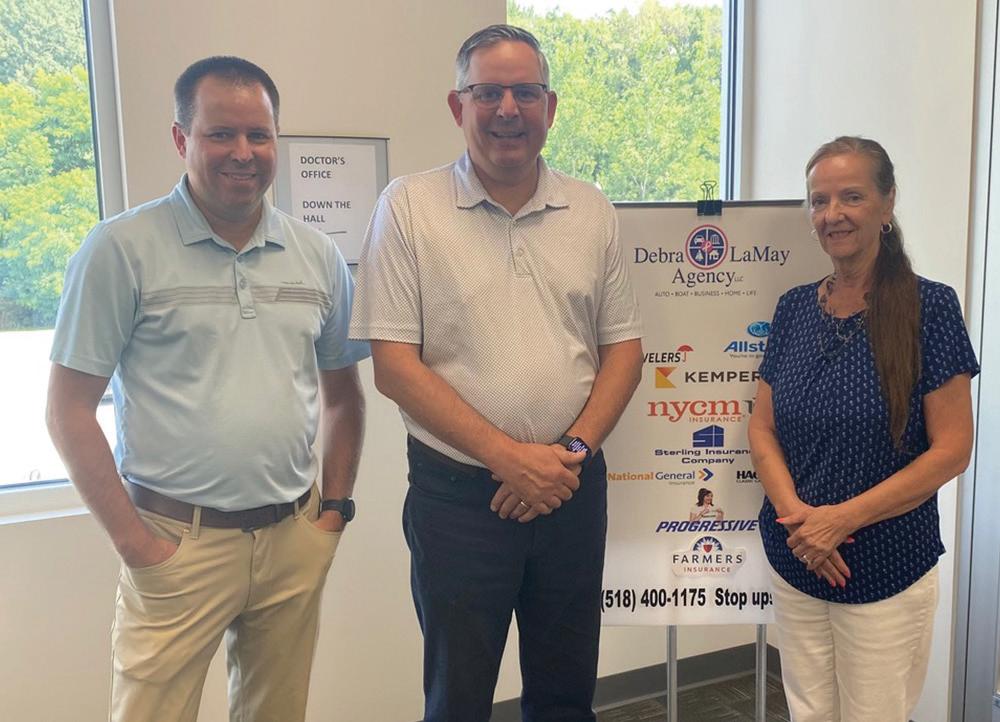
HMS Agency, a trusted, family-owned insurance agency serving the Capital Region, is proud to announce the acquisition of the Debra LaMay Agency. The acquisition strengthens HMS’ presence in the region and reinforces its commitment to providing clients with the personal, relationship-focused service that both agencies are known for.
Debra LaMay, an insurance professional with nearly 50 years of experience, brings a loyal client base and a long-standing reputation for integrity and community service. She will remain with the agency in her current role, continuing to serve her clients with the same dedication and personal attention they’ve always relied on.
“Debbie has built a legacy around care, trust, and responsiveness, which are values that are at the heart of our mission at HMS,” said Bill
Mather, Jr., Principal of HMS Agency. “We’re honored to welcome her and her clients to the HMS family.”
As part of this acquisition, HMS Agency has relocated its Ballston Spa office to a new location: 2537 Route 9, Suite 200 Malta, NY 12020
Clients of both agencies can expect a seamless transition with no changes to the high level of service and personalized attention they’ve come to rely on.
This acquisition reflects HMS Agency’s steady growth while staying true to its roots as a family-owned business built on trust, community, and exceptional client service. For more information on HMS Agency, please visit hmsagency.com

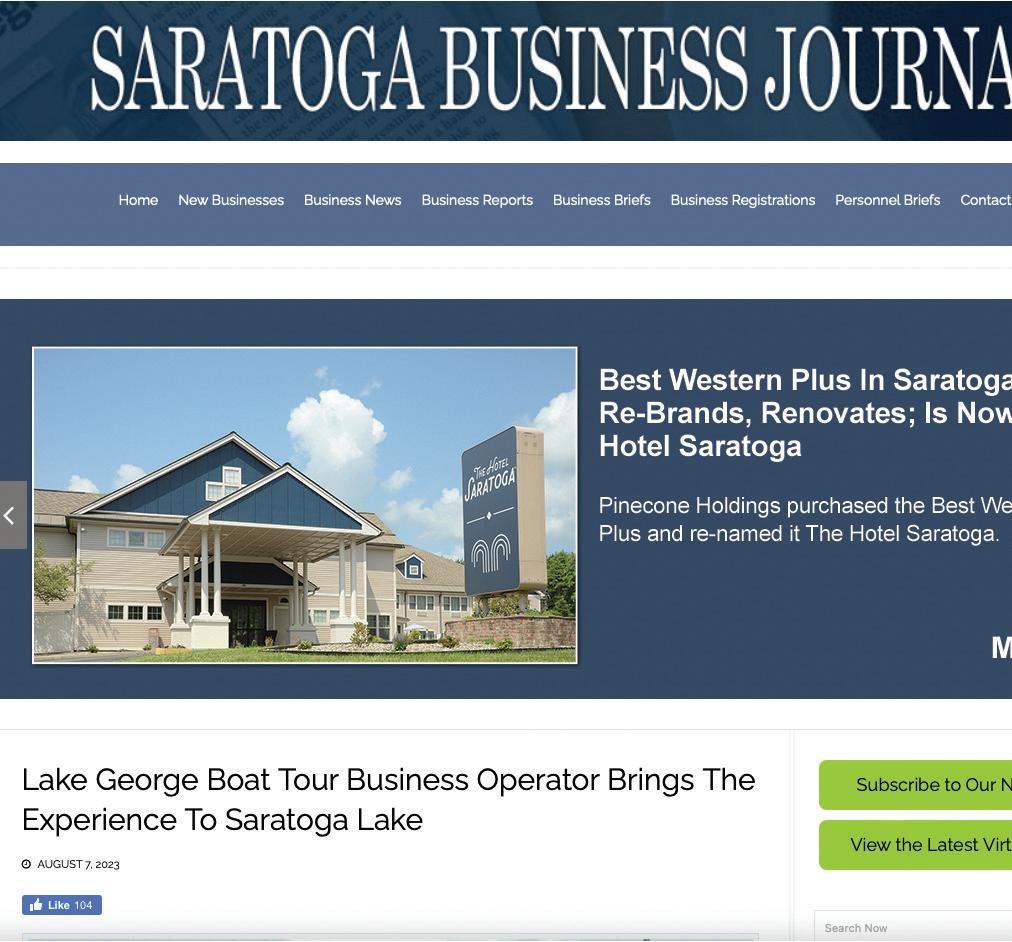


Go on our website www.SaratogaBusinessJournal.com www.GlensFallsBusinessJournal.com to subscribe to our email for the release of the the virutal edition. You may also mail your check in the amount of $25.00 for 12 issues made payable to Weinhagen Associates LLC to receive your paper by mail.
9 Broad St. Glens Falls, NY 12803 (518) 581-0600 • Fax: (518) 430-3020 • www.saratogabusinessjournal.com
Editorial: rodbacon@saratogabusinessjournal.com
Advertising: HarryW@saratogabusinessjournal.com Press Releases: pressreleases@saratogabusinessjournal.com
Publisher & Editor Harry Weinhagen
Editor Emeritus Rod Bacon
Sales and Customer Service Harry Weinhagen Mary Longley
Production Manager Graphic Precision
Contributing Writers Susan Campbell Lee Coleman Ann Donnelly Jill Nagy Paul Post
Saratoga Business Journal is published monthly, the second week of each month, by Weinhagen Associates, LLC and mailed to business and professional people in Saratoga county. Saratoga Business Journal is independently owned and is a registered tradename of Weinhagen Associates, LLC, 9 Broad St. #7, Glens Falls, NY 12801 (518) 581-0600. Saratoga Business Journal is a registered tradename in New York.
Saratoga Business Journal has been founded to promote business in Saratoga county and to provide a forum that will increase the awareness of issues and activities that are of interest to the business community. Subscription price is $25.00 per year. Third class postage paid at Glens Falls, New York.
Rights to editorial content and layouts of advertising placed with Saratoga Business Journal which are the creative exort of its contractors, and printing materials supplied by Saratoga Business Journal are the property of Saratoga Business Journal and may not be reproduced by photographic or similar methods, or otherwise, without the specific authorization of Saratoga Business Journal.
Battenkill Conservancy (BkC) is pleased to announce that Miranda Trombly Harrington, Cossayuna native and a longtime supporter of the Battenkill, has joined BkC as its Donor Engagement Coordinator.
Miranda is a graduate of Greenwich High School, received her BS in Biology from The University of South Florida and works as an Environmental Educator at Moreau State Park. Certified in Wilderness First Aid and an ACA-accredited paddling instructor, she loves inspiring people with accessible, fun, and engaging ways to connect with nature. Her future goals of becoming a NYS-certified hiking guide will further support outdoor safety, education, and environmental stewardship in our region.
Miranda’s bonds with the Battenkill run deep. In addition to her family ties, her work with highway cleanups, The PIcky Bug Tables and The Battenkill Runs Through It River Festivals demonstrate her dedication to help preserve the watershed for the community and future generations. Last spring, Miranda and her fly fishing husband, Bryan Harrington, were married at BkC’s Schmidt Meadow Preserve in Jackson.
In her new role as Donor Engagement Coordinator, Miranda will focus on volunteer coordination, sponsorship engagement and amplifying BkC’s mission through social media. Miranda is keen to “bring fresh energy, creative ideas and exciting new events to BkC, from community cleanups to innovative outreach initiatives”. She is encouraging the community and beyond to follow along on BkC’s Facebook and Instagram accounts


and to sign up for their quarterly BkC e-Newsletters. Most importantly she wants the community to get involved in ensuring the Battenkill remains an accessible resource for all.
The Battenkill Conservancy is a donationdriven nonprofit land trust. Every gift helps protect the river, fund education programs, and grow outreach efforts. Your donations are crucial to ensure the work continues. Reach out to Miranda at bkc@battenkillconservancy.org









BY ROD BACON
An experienced teacher has started a preschool to help ensure that young minds and bodies have a firm foundation as they embark on their educational journey.
Under the direction of Founder and Lead Teacher Mrs. Jill Fish, children ages 3 to 4 will develop social, emotional, and early educational skills in a safe and nurturing environment at Skool of Fish.
Youngsters attend either a morning or afternoon session lasting 2.5 hours in which they are exposed to building social skills like sharing, cooperation, and listening; early literacy skills that include letter recognition and name writing; basic number concepts and simple counting; color and shape recognition; and developing fine motor skills through crafts and hands-on activities.
Mrs. Fish is aided in this endeavor by her daughter, Lindsey Fish, who is a substitute teacher and market-
ing coordinator working at the school on an as-needed basis. Lindsey is also the owner/photographer of Super Source Media Studios LLC, a business located in the Wilton Mall that provides a complete range of photographic services.
Mrs. Fish is CPR and first aid certified while Lindsey is CPR certified.
She also has an assistant in the classroom.
Mrs. Fish has 17 years of classroom experience that ranges from middle school to preschool. She started while still a teenager as an aide under the guidance of her mother, Kathy McDermott, working at BOCES with special education students and those with behavioral issues.
She wasn’t fully committed to education at that point so she trained as a hairdresser, a career she pursued for four years.
She realized, however, that this was not her calling in life and returned to education as a classroom aide


with the Saratoga Springs School District. She spent 15 years there before moving to the YMCA’s preschool program for two years.
“I realized that this was very rewarding for me, watching the growth of the kids I was working with,” she said. “I saw the growth they experienced in every aspect -- not just physical but the emotional, the social, the academic -- and I thought ‘I had a part in that.’ That’s what led me to where I am today.”
Another motivating factor was her son, Jae, who is on the Autism spectrum. He is high-functioning and through considerable effort on both their parts he has achieved success in his chosen field. He earned a master’s degree from the University at Albany and currently works for the New York State Assembly.
Mrs. Fish has taken the Heggerty Phonemic Awareness Curriculum and added elements of other educational programs. The Heggerty Curriculum is a structured, research-based program designed to build foundational literacy skills in students from early PreK through 5th grade.
“This will prepare them academically for kindergarten,” she said. “It has phonics in it so it starts early reading. It has a writing component because there’s a certain way you have to teach writing. It has all the strong academic pieces. Then I splash in a bit of creative play because it keeps the kids interested and it’s fun.”
Little to no technology is used to ensure the children are fully engaged in hands-on activities, creativity and real-world learning.
Parents are given regular updates on their child’s progress.
The facility has a fenced-in area where the children can play outside, weather permitting.
The school is allowed to have up to 20 students enrolled but Mrs. Fish maintains a ratio of one teacher for every seven or fewer children.
“I want my students to get what they need,” she said. “I want to be able to teach them the way they need to be taught. When you have too many kids they don’t get the individual attention they require and deserve.”
The school operates September through June, Monday through Friday, from 9 a.m.-11:30 a.m. and noon-2 p.m. The five-day sessions cost $500 per month and the optional Monday-Wednesday-Friday sessions are $300 per month. Personal tutoring is available for $50 per hour.
Skool of Fish LLC is located in Suite 52, 100 Saratoga Village Blvd., Malta. For further information go to skool-of-fish.weebly.com.
Five years ago, Sherry Calkins stood in the lobby of a modest, twelve person marketing agency. Armed with rock-solid confidence in her vision, she faced a pivotal question: to grow, should she build from scratch or level up through acquisition?
Sherry chose the latter—and it transformed her business overnight. She acquired two neighboring agencies, instantly inheriting talented teams, established processes, and a loyal client roster. Today, her firm boasts 29 employees, supports over 100 clients, and continues to expand its geographic footprint—proof that strategic deals can supercharge growth.
For established owners eyeing new markets, service lines, or greater capacity, acquisition offers unbeatable advantages. You step into immediate cash flow, proven operations, and trained staff—assets that can take years to develop organically. Sherry also unlocked significant savings by centralizing accounting, HR, and administration..
Financing these deals is more accessible than many realize. Traditional lenders—and even the SBA—regularly underwrite up to 90% of a purchase price.
Of course, success hinges on due diligence. Will the target’s cash flow cover your debt service, a fair salary, and reserves for reinvestment? Have you negotiated a price that still delivers attractive returns?
Interested in discussing how we can help you sell your business? Give me a call. I have been helping owners buy and sell companies for over 20 years!
mergers & acquisitions, valuations, advisory
(518) 599-0219

kthiel@thielgroup.com www.thielgroup.com
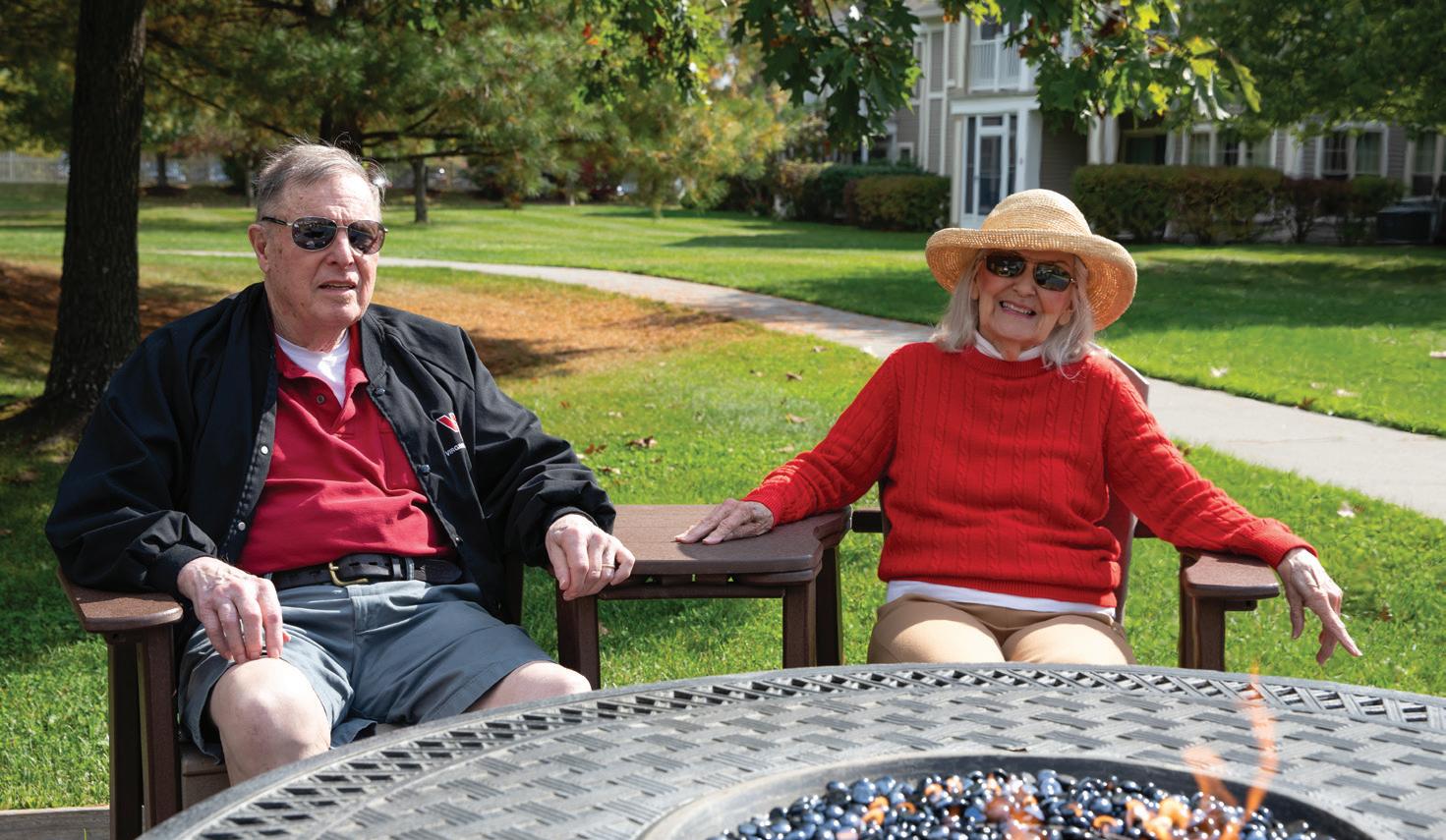
• Fully equipped wellness center
• State-of-the-art indoor pool and spa
• Life-enriching activities, wellness programs, and fitness classes
• Delicious chef-prepared meals
• Extensive calendar of social events
• And so much more!
BY REG HARNISH, CEO OF ORBITALFIRE CYBERSECURITY
By now, most small business owners and leaders understand that cybersecurity is a must-have, not a nice-to-have. Ransomware, email scams, compliance requirements and customer questionnaires are no longer reserved for big corporations; they’re the new reality for smaller businesses in our own communities.
But when it comes to accountability, there’s still a lot of confusion about who’s actually in charge of managing and improving your company’s security.
If you’re like many small businesses, you probably have a part-time IT person or are working with a Managed Service Provider (MSP)—a third-party IT company that handles things like computer updates, hardware support, networking, and maybe even managing your cloud applications.
But here’s the uncomfortable truth:
Your MSP is not your cybersecurity provider. And they were never meant to be.
e IT vs. Cybersecurity Divide
It’s easy to lump IT and cybersecurity together. After all, they both deal with technology and data. But they are not the same and treating them like they are can be a costly mistake.
Th ink of it like this: your accounting software runs on technology, but you wouldn’t ask your IT provider to do your taxes.
Specialties are the norm in every aspect of your life, and cybersecurity is no different. And while it’s true that some technology can help improve your security, it can also create vulnerabilities, risks and problems when it’s not managed adequately.
Let’s be clear: MSPs are essential. They manage backups, patch your systems, and keep employees from throwing laptops out the window. Many also offer security-related tools like antivirus, spam fi ltering, and fi rewalls. These are

all helpful, even necessary, but they’re tools, not a strategy. And these tools are just a small part of your cybersecurity program.
Effective small business cybersecurity has changed dramatically in recent years. It now involves:
• Risk assessments and mitigation planning
• Regulatory compliance (HIPAA, CMMC, NYSDFS, FTC Safeguards, etc.)
• Policies and plans
• Awareness training and employee behavioral change
• Th reat monitoring and incident response
• Governance, accountability, and long-term planning
Doing all of this well requires experience, expertise and focus.
Whose Job Is Cybersecurity, Really?
But here’s the real kicker: Cybersecurity is
Continued On Page 14




BY ROD BACON
An area law firm has expanded to better serve its clients.
Whitson Law PLLC, headquartered in Elizabethtown with a satellite location in Saratoga Springs, recently opened offices in Plattsburgh and Albany.
Founded in 2009 by Debra Whitson, Esq., the firm specializes in all aspects of family law.
“We believe every individual and family should have options to avoid the acrimony, uncertainty, and cost of letting courts determine their fate and their children’s future,” said Whitson. “What we offer our clients is unique, and we want to reach as many people as possible who would benefit from our services.”
All members of the team, from the attorneys to support staff, are trained to assist clients navigate the often choppy waters of a family in distress. Practice areas include divorce, family offense, child custody, child support, separation agreements, grandparents’ rights, prenuptial agreements, and protective orders. At the other end of the spectrum is adoption advice for couples wishing to add to their families.
According to Director of Sales & Marketing Karlien Haese, the firm operates on an appointment-only basis. When a consultation is requested an attorney and appropriate support staff travel to the office most convenient for the client.
“That is why we opened the two new offices,” she said. “We were getting a lot of inquiries from those areas so we knew the demand was there.”
Before a negative approach is undertaken, Whitson always recommends mediation, which can keep the litigants out of the courtroom. This can be done either through personal consultation with a mediation specialist or by utilizing Mediated Online Solutions, LLC, an arm of the firm operated by Whitson and John J. Haverlick, LCSWR.
The firm offers what is termed client concierge service, where clients are assigned a dedicated staff member who helps them with paperwork and provides regular updates on the status of their case. This allows the attorney assigned to the client to concentrate on providing the best possible representation.
Most of the staff are Certified Divorce Specialists (CDS), a designation earned through the National Association of Divorce Professionals (NADP).
Whitson is a 1986 summa cum laude graduate of Cornell University with a bachelor of science degree in human development and family studies. She earned her Juris Doctor magna cum laude in 1994 from Elisabeth Haub School of Law at Pace University.
She was chief special victims prosecutor for the Essex County District Attorney from 1994-2005; staff attorney at the New York Prosecutors Training Institute from 2006-2007; and during the 19992000 academic year was an associate professor of

criminal justice at Clinton Community College. She is also the author of “Divorce Like A Pro: A Better Way To Break Up,” which she terms “a practical guide to navigating divorce with dignity.”
She introduced collaborative divorce, a method for couples to dissolve their marriage outside of court, to the Adirondack region. This emphasizes cooperation and negotiation to reach agreements on all aspects of divorce, such as property division, child custody, and support.
In a partnership with Whitson Law, Maria Natapov offers BeH20, a service designed to help couples in crisis effectively co-parent. The goal is to not only ensure the well being of the child but also that of the parents.
In addition to Whitson, the staff includes Partner Martin Cohen, Associate Attorney Alessandra Carpini, and Of Council Attorney Amanda Dysart. At the end of the month Will Donovan, an attorney with experience in the family law division of the public defender’s office, will come on board.
Support staff includes Senior Paralegal Jessica Oteney, Law Clerk Katie Short, Sales & Marketing Director Karlien Haese, Marketing Assistant Jasha Cuezon, Client Support Specialist Lucia Galdos, and Executive Assistant Marenique Van Der Westhuizen
With the opening of the new offices the firm now serves clients from the Capital District through the Upper Hudson Valley to the Canadian border.
According to Whitson, future plans include expanding into Western New York state and the greater New York City area.
For further information go to whitsonlawfirm. com.

BY DAVE KOPYC
Over the next two to three decades, the world will witness one of the largest intergenerational wealth transfers in history. An estimated $85 trillion is expected to pass from Baby Boomers to their Gen X and Millennial heirs in the United States alone. This unprecedented financial shift is reshaping how individuals approach retirement planning, inheritance, tax strategies, and financial legacy.
As people live longer and families become more financially interconnected, preparing for this massive wealth transition is essential—not just for those passing on assets, but also for those who will inherit them. Effective retirement planning now means more than just ensuring you don’t outlive your savings. It also means positioning your wealth in a way that aligns with your values, minimizes tax liabilities, and ensures smooth succession.
Baby Boomers, born between 1946 and 1964, collectively hold more than half of all U.S. household wealth. Much of this is tied up in real estate, investment portfolios, family businesses, and retirement accounts. As this generation enters advanced retirement or passes away, these assets will gradually transfer to younger generations.
Estimates from Cerulli Associates indicate that roughly $84-85 trillion will transfer through inheritances and estate planning by 2045, with $72.6 trillion going directly to heirs and another $11.9 trillion to charities. For both givers and recipients, planning is essential to preserve this wealth.
For retirees with significant assets, estate planning must be an integral part of retirement strategy. A comprehensive estate plan includes wills, trusts, power of attorney, and healthcare directives, ensuring that assets are distributed as intended and legal hurdles are minimized.
Trusts, in particular, offer tax advantages and control over how and when heirs receive assets. Revocable living trusts allow flexibility during life, while irrevocable trusts can reduce estate taxes. High-net-worth individuals should also consider gifting strategies during their lifetime to reduce the taxable estate.
With the lifetime estate and gift tax exemption currently at $13.61 million per individual (as of 2025), many affluent retirees are leveraging this window to gift assets to heirs before potential future reductions. However, once the exemption sunsets in 2026 (unless legislation extends it), it could drop to about $6–7 million, potentially increasing tax exposure.
Retirees should work with financial advisors to employ tax-efficient strategies like Roth IRA conversions, charitable remainder trusts, and donor-advised funds. Managing required minimum distributions (RMDs) from retirement accounts can also reduce taxable income and preserve capital.
Receiving a significant inheritance can be both a blessing and a challenge. Without proper financial literacy or guidance, heirs may squander what took decades to build. Planning is crucial for recipients to make the most of their inherited wealth.
Heirs need to understand what they are inheriting—whether it’s real estate, investments, retire-
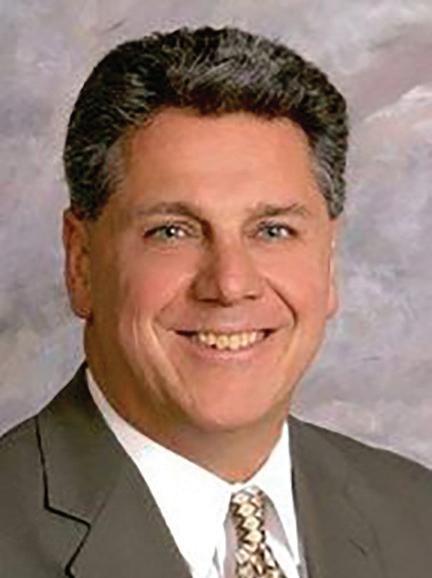
ment accounts, or a business. Different assets have different tax implications. For instance, inherited IRAs require distributions, while real estate may benefit from a stepped-up cost basis.
A sudden influx of wealth can impact retirement timelines, investment strategy, and lifestyle. However, instead of relying solely on inheritance, younger generations should continue building their own retirement plans—maximizing 401(k)s, Roth IRAs, and other vehicles—to maintain financial independence.
One of the most overlooked elements of retirement and inheritance planning is open family communication. Many families avoid conversations around money, death, and legacy, leading to confusion, disputes, and misaligned expectations after a loved one passes.
Retirees should hold intentional discussions with heirs, clarifying estate plans and sharing the values behind their financial decisions. Legacy planning is not only about transferring money, but also about passing on stories, lessons, and philanthropic goals. Tools like ethical wills or family mission statements can help solidify a legacy beyond wealth.
With so many moving parts—changing tax laws, volatile markets, and complex family dynamics— working with a team of professionals is more important than ever. A coordinated approach involving financial planners, estate attorneys, tax professionals, and even family counselors can ensure that wealth is preserved, protected, and purposefully passed on.
Advisors can help retirees:
• Navigate changing estate tax laws
• Create trusts and legal documents
• Plan charitable giving strategies
• Educate heirs on financial management
• Adjust portfolios for longevity and legacy
For younger generations, advisors can help integrate inheritance into a holistic financial plan, optimize tax strategies, and plan for their own retirement and legacy.


BY SUSAN ELISE CAMPBELL
Aging baby boomers continue to represent a growing population in the Capital District and into the North Country. But seniors moving from their homes to an independent living situation have not changed as much demographically over the past five or 10 years as one may have thought.
“If anything, they are entering senior living later and later in life because they are active longer, due to medication and the wellness impact on the community,” said Andrea Hebert, executive director of The Glen at Hiland Meadows in Queensbury, an Eddy Senior Living Community.
On the other hand, for those anxious to shed the responsibilities and costs of maintaining a house and yard, age is less of a factor.
“We do see residents seeking us out at a younger age than they may have 20 years ago, partly because this type of independent living situation didn’t exist a generation ago,” said Kellie Postlethwaite, general manager at Prestwick Chase in Saratoga Springs.
Nursing homes were the common option then, and Postlethwaite said many people still do not understand the difference between what is now called enhanced assisted living and independent senior living, such as The Glen and Prestwick Chase provide.
of a stereotypical rocking-chair image that was formerly associated with seniors, Postlethwaite said.
“Independence means more than maintenance-free living,” said Hebert. “It can also mean not climbing stairs and having transportation needs met and meals prepared, if that is what residents seek.”
“Entering a senior community sooner would allow pursuing their goal of independence sooner,” said Hebert. “Downsizing into an apartment is difficult, but I wish people would realize that coming a little sooner would give them a lot of freedom.”
One current trend may be that seniors want larger apartments than in the past. Hebert said The Glen built a new wing with 28 larger units a few years ago because they found “even a single individual likes an open floor plan and more space.”
Some who are selling the homes they raised their families in are experiencing higher valuations than ever, but that is not their main reason to transition out of homes and into independent living. The primary motivators are socialization, maintenance-free living, and the influence of their children.
Adult living communities encourage residents to pursue their interests and to come and go as they please. Staying active is the opposite

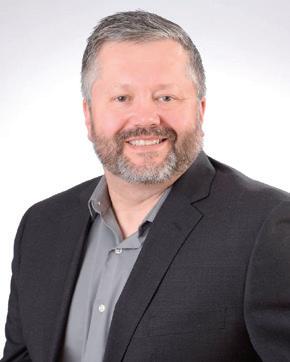

“The housing market may be a factor for a few, but the majority have already made their decision,” Postlethwaite said. “Their motivation may be a limitation, such as no longer being able to do stairs, or have taken the step to be

BY SUSAN ELISE CAMPBELL
The first of 14 custom homes broke ground some months ago at Riley Farm, a unique new development near Lake Lonely in Saratoga Springs. But developer Mike Phinney, owner of Phinney Design Group, said he would “be happy to take four or five years” to complete construction of the kind of “uniquely designed and sustainable homes” that Phinney is winning prestigious awards for.
“I am not just trying to kick out a subdivision,” he said. “The owner of the land, Kenneth Scott, wants to develop it in concert with nature.”
Scott is a scientist who has traveled the world as an expert in gene therapy and anti-aging technologies, Phinney said. Scott purchased the former working farm in the 1980s.
“He has done his research and has high sustainability goals to make homes net zero,” said Phinney. Phinney has been a leader and pioneer in the sustainable design movement since the mid-1990s. His firm focuses on environmentally responsible construction methods and is headquartered in a sustainable green building.
When Scott approached him, Phinney didn’t sense a good match at first.
“As soon as he mentioned a subdivision, I
thought, we don’t do generic houses that aren’t tied to a site and where the only thing that differentiates them is the paint color,” said Phinney.
But after a few discussions, Scott convinced him their goals were aligned and told Phinney he wanted him to be the dedicated builder, designer and architect, Phinney said.
“I think I turned him down three times,” he said. “But he is a unique client with a passion for real estate as well as the ways that habitat can affect health.”
Each Phinney home is custom designed for the owner, he said. The design process starts with analyzing the site, from zoning requirements to terrain and soil type to sun exposure, the latter being important for solar systems and interior light, as well as exterior design aesthetics.
The lots at Riley Farm are one-half acre and up to three acres. One parcel is 15 acres, which was dictated by the slope and natural features of the land.
Phinney said at one time the Scotts may have wanted to build for themselves on the largest lot, 40 acres across the road from the subdivision, but are leaving it on the market for development. The LA Group, landscape architects in Saratoga Springs,
Continued On Page 15



BY ROD BACON
Munter Enterprises, Inc. is in various stages of adding three new buildings to the W.J. Grande Industrial Park in Saratoga Springs.
According to Vice President Mike Munter, they have two projects underway on Skyward Drive.
They recently received approval from the Saratoga County Industrial Development Agency (IDA) for a 35,000-square-foot facility for Ambrave Corp., a company that designs and manufactures advanced tactical gear for military special operations forces and law enforcement under the brand Direct Action and for outdoor enthusiasts under the brand Helikon-Tex.
Headquartered in Poland, the company has manufacturing plants in Nowa Ruda, Swiebodzice and Nysa. Some products are manufactured in Vietnam, Taiwan, and China.
The company distributes its products worldwide, with their current facility in Malta being responsible for marketing in the United States, Canada, and Mexico. Under the name Direct Action LLC it has been in Malta since 2018. Ambrave was established as an umbrella company last year.
According to CEO Konrad Gdowski, the company’s U.S. operations started in Ballston Spa in 2014. They doubled their space with the 2018 move to Malta and doubled it again in 2021.
“With the move to Saratoga we will triple our current space,” he said.
In Poland there are 300 people employed in manufacturing, research and development, distri-
bution, marketing and administration.
Gdowski said the experience of working with Munter Enterprises has been a very positive one.
“I’ve known about them since 2014,” he said. “I talked with multiple builders for this project and I really enjoyed working with John and Mike.” Munter said they plan to start construction on the $6.5 million building within the next few weeks with an estimated completion date of spring 2026.
The other project on Skyward Drive is a 120,000-square-foot spec building that is currently in front of the Saratoga Springs Planning Board. According to Munter, it is the last piece of vacant land on the east side of the industrial park.
“We are just in for approvals right now,” he said. “We’re trying to get that one approved so it’s ready to go if someone needs space of any kind. We’re not going ahead with construction until we know who is going in it.”
Both of these projects are on plots owned by Munter Enterprises.
Also in the industrial park, planning board approval has been obtained for a $2.5 million, 17,000-square-foot addition to a 50,000-squarefoot warehouse owned by Slack Chemicals, a distributor of chemicals for a wide variety of industries. Munter said that construction will start as soon as a building permit is issued and will take four months.
Headquartered in Carthage, N.Y., with facilities
Continued On Page 9



BY ANTHONY DEFAZIO SUSTAINABLE PR
In just the first half of 2025, the U.S. canceled or downsized a staggering $22 billion in clean energy projects. New York alone saw more than two-thirds of its onshore renewable power contracts canceled last year, setting the state back in its goal to reach 70% clean energy generation by 2030. These setbacks ripple far beyond industry losses as communities miss out on millions in potential tax revenue and thousands of jobs, while higher energy bills and continued pollution hit residents’ wallets and health.
In New York, where municipalities have significant control over land use, the path from a project proposal to a finished solar farm is often fraught with challenges. Misinformation, mistrust, and unanswered questions can fuel local opposition, leading to project delays or even cancellation. When this happens, both communities and developers lose. Developers see projects stall while communities forfeit millions of dollars in potential tax revenue and long-term economic gains. However, strategic and proactive community engagement can address concerns early, and establish trust between developers and the communities they serve and pave the way for approvals. Communities that lack experience with renewable energy projects often contend with opposition from residents when a project is announced. Residents’ concerns fester when unfamiliarity with technology meets widespread misinformation —often amplified online by fossil fuel-funded actors —and a lack of communication from developers, leading to growing community dissent. Opposition groups swell and place pressure on local boards to slow or halt development. Their efforts to influence municipal boards often succeed not by outright rejection, but through moratoriums that can delay projects up to a year or two, forcing developers to rescind their applications. Furthermore, when revised solar ordinances impose such stringent regulations on development, they can render projects no longer viable.
What is lost in the fuss and fervor is the fact that residents risk losing out on significant financial benefits by urging leaders to reject these projects, as community solar projects are proven to generate substantial tax revenue. For an average project, this can mean between $3,000 and $5,000 per megawatt annually. For a typical 5-megawatt community solar project, this amounts to about $25,000 in annual tax revenue, representing nearly three times as much tax revenue as an average residence generates, supporting vital local services like road repairs, schools, and parks. Beyond tax revenue, communities can further secure direct benefits by negotiating a Host Community Agreement (HCA) with developers. These agreements provide community support via annual payments, community benefit funds, and other investments tailored to the specific needs of the community, such as infrastructure upgrades or recreation improvements. Together, these provisions deliver tangible, meaningful financial gains that communities can leverage throughout the development process.
Unfortunately, many communities kill developments due to concerns about preserving community character and agricultural land, as well as unfounded fears of explosions or electric shock that reveal a lack
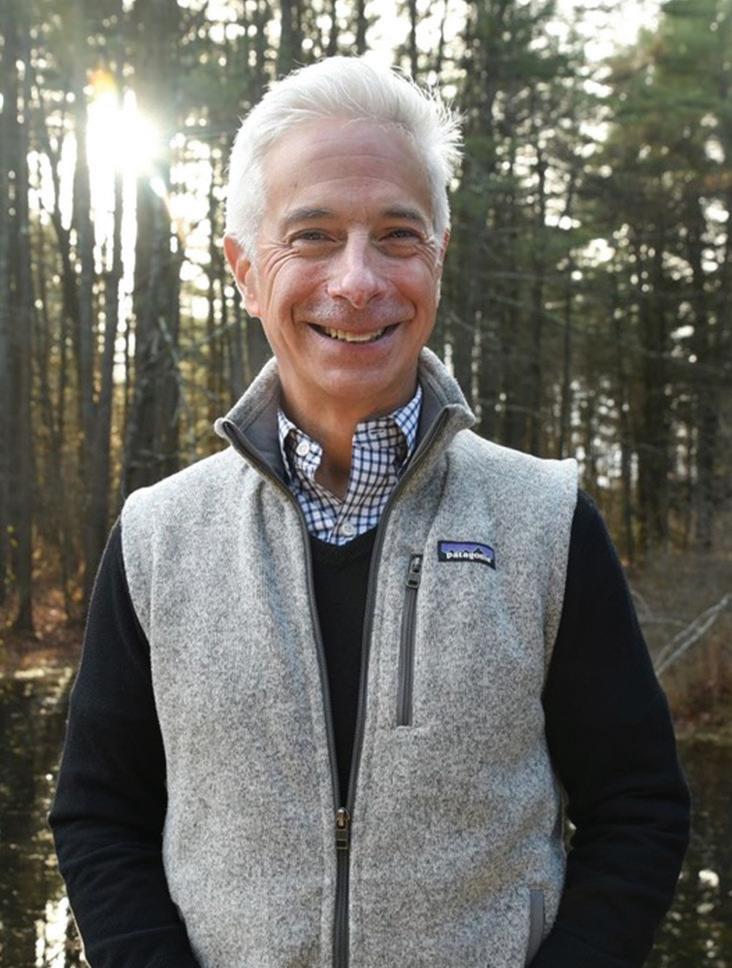
of familiarity with solar technology. These unanswered questions and perpetual concerns quickly turn into steadfast opposition, causing costly project delays and eventual cancellations that hurt both developers and host communities.
Proactive community engagement and outreach can transform this dynamic. When implemented early and executed thoughtfully, communication campaigns can educate communities about the benefits of solar technology, provide project details, and clarify the permitting process.
To effectively reach all audiences, developers can utilize a variety of tactics:
• Offer one-on-one meetings with prominent community stakeholders who can then help build bridges and disseminate accurate information.
• Organize open-house events where residents can interact directly with the development team and have their questions addressed.
• Invite third-party experts to speak with the community. They can provide credibility by verifying the safety and benefits of solar technology.
• Ensure project information is readily available –fact sheets, FAQ documents, and project descriptions should be made accessible to residents to mitigate the spread of misinformation.
Sharing essential information about solar technology and project details and proactively engaging community stakeholders helps reduce early opposition to a project. Community engagement also fosters dialogue that helps developers understand local needs, identify key concerns and tailor host community benefits to support initiatives with meaningful impact.
Community engagement has become a strategic necessity. By establishing strong partnerships with towns and municipalities, developers ensure communities are well-informed and able to negotiate benefit agreements that align with local priorities. When developers and communities collaborate as true partners, renewable energy projects can advance beyond permitting to create shared economic growth and lasting prosperity.


closer to family.”
Senior Living
Continued From Page 7
“More and more of our 65 to 70-year-olds are deciding they want to live an active life,” she said. “Often it is the children driving the decision because independent living allows their parents to not only live close by, but also to be comfortable and safe.”
Isolation during Covid impacted the physical and mental health of the older population and Postlethwaite said that, without question, seniors today want and need to be among other people.
Many residents at The Glen choose to live there because their friends do, Hebert said, and they are striking new friendships, too.
Seniors have plenty of opportunity to socialize at independent living facilities. Residents make the most of their golden years by getting involved in activities both on and off campus, said the experts.
“Every resident engages in a different way,” Hebert said. “Some go to the local senior center for association and many are interested in staying involved in activities they long enjoyed, like hiking or knitting.”
“Some residents at Prestwick do a bottle collection to raise money for a local high school marathon, some sew and stuff pillows that are delivered to hospital patients, others do roadside cleanup with the Town of Greenfield twice a year,” said Postlethwaite.
Both facilities have activities directors who
Continued From Page 8
in Castorland and Saratoga Springs, the company was founded in 1944. When Robert Sturtz purchased it in 1986, it had eight employees and three straight trucks. It averaged $3 million in sales and delivered within a 150-mile radius. Today, annual sales exceed $30 million, there are 95 employees, and the fleet has grown to well over 100 vehicles in its three locations.
“We have thirty-five power units -- tractors, straight trucks and small bulk tankers,-- and we have a fleet of over a hundred tankers and trailers in our three locations,” said Human Resources Manager Paul Pierce. “In the Saratoga Springs facility there are ten box trailers, twenty tankers, and about half-a-dozen power units. There are eighteen employees involved in prepping and packaging materials, receiving, and driving.”
Their customer base has expanded to include clients in New York, Pennsylvania, New Jersey, Vermont, New Hampshire, Connecticut, West Virginia, Ohio, Massachusetts, Maine, and Rhode Island.
Product lines include ice melters, caustics/acids, and solvents/alcohols; as well as chemicals for swimming pools; water and waste treatment; dairy, paper, industrial, plating, co-generation industrial, reagents, and food grade applications. The compa-

plan everything from activities, presentations, and games that take place in-house to music performances and theater at local venues.
Postlethwaite oversees annual travel excursions at Prestwick Chase, where groups of 12 to 16 people sign up to take more extensive trips. There is also a resident council who offers their input on new places to visit.
Both managers at The Glen and Prestwick Chase commented that they have residents who continue to work part-time. Many residents come from backgrounds such as teaching,medicine, engineering, and other professions.
As the time to move approaches, both communities have staff to help make transitioning smoother.
“We encourage people to take a tour, come in as many times as they want, try the food, and visit with the residents,” Postlethwaite said.
She said one of the draws of Prestwick Chase is that “there are three restaurants under the direction of an executive chef, not a food service company” and that it is the only such community with a liquor license.
Prospective residents need to do their homework as they decide where to spend their active years and evaluate which amenities they will need. The pricing structure and what is included in each package differ from place to place. Visit eddyseniorliving.com and prestwickchase.com for more information.
ny also has mixing and blending capabilities. Pierce said Munter has built all the additions to their facility as well as a new building opposite the main one. They were also the general contractor, working with Watertown, N.Y.-based MTL Design, Inc., on several additions to the company’s Castorland location.
“Our experience working with the Munters has been fantastic,” said Pierce. “We’ve been dealing with them for years and it’s been a great working relationship.”
Elsewhere, Munter Enterprises is starting construction in Greenwich on a 2,500-square-foot branch of the Hudson River Community Credit Union. The building will include a drive-thru and state-of-the-art Interactive Teller Machines (ITMs). A unique aspect of the project, according to Munter, is that because of the Amish population in the area there will be a hitching post and water hydrant for horses in the parking lot.
Typically, Munter Enterprises does all the concrete work, steel erection, and envelope installation on its projects. They subcontract things like plumbing, electrical, and HVAC to a variety of local craftsmen.
They often partner with Paone Architecture, PC, of Saratoga Springs, for building design and Verity Engineering, D.P.C. of Troy for site design. For further information on this company’s work go to munterenterprises.com.












SPRINGS, NY 12866 (518) 584-2555
BY STEPHEN KYNE, CFP®
Navigating the world of retirement planning can feel daunting. With a mix of jargon, acronyms, and seemingly contradictory advice, it’s easy to feel overwhelmed. However, much like any successful long-term strategy, the foundation of a secure retirement rests on a few core principles: starting early, being consistent, and having a clear plan. This Q&A breaks down the essential first steps to help you get on the right track.
Q: This all seems so complicated. When should I actually start saving for retirement?
A: The simple, unwavering answer is: now. The single most powerful tool in your fi nancial arsenal is compound interest, which is the interest you earn on your initial investment and on the accumulated interest from previous periods.
Think of it this way: if you invest $10,000 and it earns an average of 7% per year, after one year you’ll have $10,700. The next year, you earn 7% on the full $10,700, not just the original $10,000. Over decades, this effect snowballs, allowing your money to do much of the heavy lift ing for you. The person who starts saving in their 20s has a monumental advantage over someone who waits until their 40s, even if the late-starter contributes more money annually.
Q: How much do I actually need to save? Is there a magic number?
A: While there’s no universal “magic number,” there are excellent rules-of-thumb to guide you. Many fi nancial advisors suggest aiming to save 15% of your pre-tax income each year for retirement. This includes any contributions your employer might make on your behalf.
To figure out your ultimate goal, a common guideline is the “4% Rule.” This principle suggests that you can safely withdraw 4% of your retirement savings in your first year of retirement, and then adjust that amount for inflation each subsequent year, with a high probability of your money lasting for at least 30 years. To use this, you can work backward: estimate your desired annual income in retirement and multiply it by 25. If you think you’ll need $60,000 a year, your target nest egg would be $1.5 million ($60,000 \times 25).
Q: I’m ready to save. Where should I be putting the money?
A: Some of the best place to start is with tax-advantaged retirement accounts. The most common are:
• 401(k) or 403(b): These are employersponsored plans. Your contributions are often made pre-tax, lowering your current taxable income. The biggest advantage is the employer match. If your employer offers to match your contributions up to a certain percentage, you should contribute at least enough to get the full




match—it’s essentially free money and a 100% return on your investment.
• Individual Retirement Arrangement (IRA): Anyone with earned income can open an IRA. There are two main types:
• Traditional IRA: Contributions may be tax-deductible, and your money grows taxdeferred. You pay income tax on withdrawals in retirement.
• Roth IRA: You contribute with after-tax dollars (no upfront tax break), but your investments grow completely tax-free, and you pay no income tax on qualified withdrawals in retirement.
Q: What should I invest in within these accounts? Stocks? Bonds?
A: This is where you structure your plan to succeed. A portfolio should be diversified, meaning you don’t put all your eggs in one basket. The core components are stocks and bonds. Stocks (equities) offer higher potential for long-term growth but come with more volatility. Bonds are generally considered safer and provide stability and income, but with lower long-term returns.
A common strategy is to hold a higher percentage of stocks when you’re young and have a long time horizon to recover from market downturns. As you approach retirement, you may gradually shift your allocation to be more conservative, depending on your actual need for growth and risk.
As always, your circumstances are unique. As helpful as rules-of-thumb may be, it’s important to evaluate your specific needs in formulating a long-term plan to help ensure a successful retirement. Be sure to consult your Certified Financial Planner® professional for a strategy that’s right for you!







BY NATALI COBB
As we approach six years since the COVID-19 pandemic started, people are starting to notice the long-term impacts, and continuous aftershocks of this historical inflection point. About a year after the world shut down, people began to call this phenomenon “this generation’s 9/11”. Although I was just two years old when our country suffered the aforementioned tragedy on September 11th, I knew exactly what they meant. An event so impactful that history begins to be separated into timelines of ‘pre’ and ‘post’ event. We can draw many similarities between the post-9/11 and postCovid worlds—heightened awareness of safety, generational rise in anxiety, shift ing personal priorities, changes in travel, and cultural and workplace shifts. As a commercial interior designer, that last point is crucial to understand how people need to work and exist in this new world.
Human centric design revolves around just that—human beings. It explores the needs, comforts, and well-being of humans in the built environment, and aims to create spaces that increase productivity, foster connections, and improve health and wellbeing. We as people spend an average of 90% of our time indoors, yet it has only been in recent years that the health of the spaces we exist in has really been considered. We are seeing more and more companies push for employees to return to the office, but are being met with resistance. People have become accustomed to working in their homes, with limited peer interactions except through virtual conferencing platforms like Zoom or Teams. Employees in the post-pandemic world crave comfort and flexibility in their workplace, and they are demanding more from an office than just a desk and wi-fi.
Pre-pandemic offices prioritized efficiency of space over individual needs, but offices lined with cubicles are becoming a thing of the past. Some people thrive in buzz and collaboration, and others require quiet focus, and both can be true in the modern office. Flexibility in employees’ work environments has become critical to productivity—in Gensler’s 2024 Workplace Survey, employees who have a choice in where they work reported 14% higher productivity. This might include spaces like quiet zones, collaboration hubs, social lounges, and wellness rooms. Creating comfort in the workplace boosts creativity, reduces stress, and encourages employees to spend more time in the office. Technology: an enabler, or a distraction? In the post-pandemic office, technology needs to flex with its users, and seamlessly integrate hybrid work environments. Built in video con-

Courtesy of Boylegroup
ferencing, mobile power, shared digital workspaces (i.e. Teams, Google Suite, etc.), and “touchdown” desks for visiting staff are imperative. Technology however, can be distracting. Good design should allow the technology to seamlessly disappear into the background, so that the focus stays on human interaction and productivity. A 2025 Gallup report shows 53% of hybrid employees say better tech tools are a top factor in their willingness to come to the office.
The return-on-investment of companies that have invested in their employees happiness in their work environment is palpable, and is growing with time. According to Gallup, companies that prioritize well-being see up to 21% high profitability. Along with this, companies that have adopted this post-covid mindset are seeing reduced turnover, improved recruitment, and stronger brand identity, while businesses resisting comfortable, flexible environments and the changing needs of their employees are seeing higher absenteeism and lower morale. The office of the future is becoming not just a place to work, but a destination that employees want to visit. This is the key to success in today’s world, and why office design is more important than ever.
The post-COVID world isn’t about returning to “business as usual” but embracing the ways it has changed how we think, feel, and act. Human-centric design is more than a trend—it’s a business model and a competitive edge. Those who adapt now will lead in attracting and retaining top talent for years to come.

Pioneer, a leading financial institution in New York’s Capital Region, announced it is taking another step advancing its strategy of being “More Than a Bank” with the launch of its newest line of business, Human Resources (HR) Consulting. The new division will be headed by Miriam Dushane, a nationally recognized industry leader, who has been hired as Vice President of HR Consulting.
Created in response to a growing need in the marketplace, Pioneer’s HR Consulting Division will provide critical HR expertise and services to small- and mid-sized companies. With an array of capabilities, including on-site HR services, project-based HR work, and leave management services, the new division will serve both new and existing clients. HR consulting joins insurance, employee benefits, and wealth management as business lines beyond financial services offered by Pioneer to support its clients – with the expectation of additional lines to follow in the future.
“In establishing an HR Consulting Division, Pioneer is deepening its commitment to supporting small and medium-sized companies that are the backbone of our community,” said Thomas Amell, President and CEO of Pioneer. “Providing valuable HR expertise and services addresses the critical needs of businesses, enhances existing client relationships and builds new ones, and marks a pivotal step toward fulfilling our strategy of being ‘More Than a Bank.’”
Pioneer’s HR Consulting Division will deliver services to business clients in three ways: through on-site HR services, in which an HR manager is assigned to a company to oversee all aspects of HR; project-based HR work, such as creating employee handbooks, overseeing audit compliance, providing training, and developing compensation studies; and leave management services, which involves enrolling employees in medical, caregiving or family leave programs
and ensuring regulatory compliance with the federal government and multiple states, which has become a major area of concern for businesses.
“Through conversations with our commercial clients, it became clear that the need for HR support is significant and growing rapidly,” said Susan Hollister, Executive Vice President and Chief Human Resources Officer of Pioneer. “We’re delighted to now have the ability to provide essential HR knowhow, programs and services, and excited to have a recognized industry leader in Miriam to ensure a first-class experience.”
As Vice President of Pioneer’s HR Consulting Division, Dushane will lead a team that includes both existing HR personnel and new hires. A SHRM Certified Professional and a HCRI certified Professional in Human Resources, Dushane brings nearly 30 years of HR leadership experience, most recently at Alaant Workforce Solutions, the recruiting and workforce services firm she developed and built into a nationally recognized industry leader over more than two decades. Under her guidance, the company was recognized by Forbes for 5 consecutive years as one of America’s Best Recruiting Firms, and received the prestigious Best of Staffing Client Diamond Award for Excellence in Client Service from ClearlyRated for the past 9 years in a row.
“I’m thrilled to join the outstanding team at Pioneer and grateful for the opportunity to help build its new HR Consulting Division,” said Dushane. “My career has been focused on guiding business leaders in navigating the dynamic HR environment, which impacts every aspect of their operation. Powered by Pioneer’s sterling reputation and longstanding commitment to local businesses, I look forward to playing a vital role in supporting our clients’ growth and success.”
To learn more about Pioneer’s HR Consulting Division, visit pioneerny.com/hrconsulting.









































BY LEE COLEMAN
Two local businessmen have purchased the long vacant Suzuki Autoworld building on Route 9 in Moreau and are renovating the structure to serve multiple small businesses.
Ben Alden and Brian McKenzie are calling the transformed building Moreau Commons. They purchased the Suzuki property from Robert Vittengl for $1million.
The 12,000 square foot building has been vacant for more than a decade. Suzuki discontinued automobile sales in the United States in 2012 although the Japanese company still continues to produce and sell vehicles in other global markets.
“We’ve had a lot of interest in the property,” Alden said.
“The building itself needs lots of maintenance, all new walls, new electrical, and insulation,” he said.
Alden owns Platinum Protective Coatings LLC at 1330 Saratoga Road (Route 9) in Moreau and McKenzie owns McKenzie Drywall, a local company that has done projects throughout upstate New York. The two men have known each other for 25 years and have done many projects together. They both live in Moreau. They started working together many years ago when they brought Linex truck liners to the region.
The men also partnered in the 1330 Saratoga Road building where Alden’s business is located along with a salon, a yoga studio and soon an Edward Jones office. McKenzie Drywall did all the interior building work and Alden manages the building.
“We are a field contractor. We do the fit up. Once the steel is up we do the inside work,” McKenzie said. His company has
worked with many builders, including Bonacio Construction and Munter Enterprises Inc. on major projects.
Executive Property Services LLC is the name of the partnership. Alden and McKenzie estimate it will cost between $400,000 and $500,000 to transform the building to serve eight or nine small businesses. A coffee cafe and Upstate Barber Shop have already claimed space in the building.
The partners feel the Northway Exit 17 corridor is under served as compared to the Northway Exit 18 and Exit 19 corridors. Traffic counts indicate that 30,000 cars pass the building each day.
“It’s ideal for business. It’s a great location. It would be nice to get a restaurant here,” Alden said. Spaces still available range from 600 to 1,500 square feet.
McKenzie Drywall is doing all the renovation and interior construction work on the building. McKenzie said the goal is to have the project completed and most spaces filled by Nov. 1. The partners are seeking final site plan approval from the Moreau Town Planning Board this month. The town’s new sewer infrastructure makes commercial construction easier, according to McKenzie.
“Brian (McKenzie) is a mentor for me. It’s great to be a partner with him,” Alden said. He said McKenzie envisioned the way the Suzuki building could be divided up and transformed into Moreau Commons with a common entrance and a shared common area. For those businesses locating in Moreau Commons electrical, all outside lawn and gardening work, and snow plowing are included in the lease. “Everything is included,” Alden said.










BY JEFFREY B. SHAPIRO, ESQ.
Are you protecting your business’s most valuable information? Losing control of it could give your competitors exactly what they need to take your customers and profits. In New York, trade secrets are the lifeblood of many businesses, whether you run a manufacturing company, a professional services firm, or a growing startup. They can include client lists, pricing models, proprietary processes, source code, or strategic plans. The risk often becomes real when a trusted employee leaves. Imagine a sales director who copies your client database before resigning. With access to pricing structures, purchasing histories, and decision-maker contacts, they could quickly undermine years of relationshipbuilding. This is why drafting enforceable agreements to protect this information can mean the difference between staying ahead of your competitors and watching them profit from your hard work.
The case of AdMarketplace Inc. v. Salzman1 shows how an employer’s ability to protect vital business information often depends on how effectively its restrictive agreements are drafted. AdMarketplace Inc., an online advertising company, sued two former employees and their new employer, a direct competitor, alleging they had taken confidential client data, solicited employees and customers, and attempted to access its password-protected database after leaving. Both employees had signed non-disclosure and nonsolicitation agreements, and one reaffirmed those obligations in a separation agreement. When the defendants moved to dismiss, the court drew a sharp line between overbroad non-compete provisions, which it refused to enforce, and narrowly tailored protections for confidential information and client relationships, which it upheld.
Restrictive agreements can be powerful when drafted correctly. They define what counts as “Confidential Information,” limit how it can be used, and outline the consequences for violating those terms. In AdMarketplace Inc., the employer’s NDA barred disclosure of client data and solicitation of clients or employees after departure. The court struck down an overly broad non-compete clause but enforced the confidentiality and non-solicitation provisions because they were focused on protecting legitimate business interests, trade secrets and customer goodwill. The first takeaway for business owners is that while New York courts often reject non-competes2, they will enforce agreements that specifically protect confidential information.
Clauses that try to declare all information learned on the job as “confidential” are likely to be struck down. The protected material must
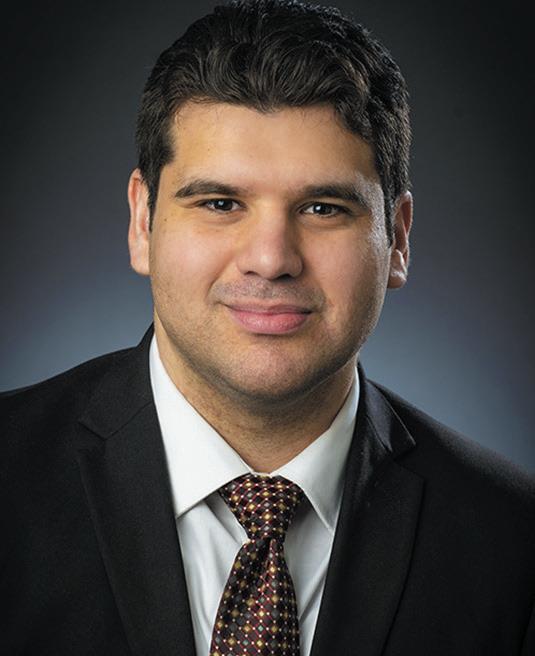
be described with enough detail to show it is truly proprietary. Public information cannot be turned into a trade secret by contract alone.
Even the best contract will not help if you have not taken reasonable steps to protect your information in practice. Courts will look at safeguards such as password protection, limiting access to employees with a need to know, and training staff on confidentiality.
New York law also offers protection even without a signed NDA. To succeed on a trade secret claim, you must show that the information meets the legal definition of a trade secret, was shared in confidence, and was used without permission to your detriment. Courts consider how widely the information is known outside your business, the measures taken to keep it secret, and the difficulty of duplicating it. The most effective protection combines precise, enforceable agreements with operational discipline that keeps your trade secrets secure.
The key takeaway for businesses is that courts will reject overreaching restrictions on competition but will enforce targeted measures that protect the core of your competitive advantage. Identify your trade secrets, control access to them, use agreements that are specific and defensible, and be ready to prove both the breach and the resulting harm if your information is stolen.
1 2014 NY Slip Op 30813(U) (Sup Ct, NY County 2014).
2 This article does not cover strategies for drafting an effective non-compete.














ultimately your responsibility. Yes, even if you engage with cybersecurity experts and buy a cyber insurance policy. Your prospects, customers, supply chain partners, and employees all expect that you’re doing the things you need to do to protect your business. Th is isn’t about blame—it’s about accountability.
That’s why it’s so important for small businesses to stop assuming someone else is “taking care of it.” Cybersecurity isn’t a service you can throw over the fence and forget. You need to own it, understand it, and be involved in how it’s handled, which is often through a partnership between someone within your organization who has signed up to be the internal point person and a dedicated cybersecurity partner.
What Does “Accountability” Actually Look Like?
The idea of being “cyber accountable” might sound overwhelming. But it’s not about becoming an expert; it’s about making informed decisions and owning the outcomes.
Here’s what accountability can look like:
• Engaging with qualified experts for all areas of your program – legal, insurance, compliance, communications, technology and cybersecurity in general. There is no one entity that can handle all your “cybersecurity”.
• Addressing the “risks” your business faces. Are you at greater risk of a power outage, late paying customers or ransomware?
Warren County Department of Public Works is seeking public comment on a proposal to replace the Hudson Street bridge over Mill Creek in the Town of Johnsburg.
The project, estimated to cost about $2 million and funded by NY State grant funding, involves replacing the current bridge, which was built in 1914, with a 54-foot long steel structure with concrete
• Knowing what sensitive data you handle. Do you interact with fi nancial accounts, healthcare records, or defense-related secrets—and how do you protect it?
• Treating cybersecurity as a business function, not just an IT issue. Is leadership involved in your cybersecurity strategy and direction?
It’s not about doing everything yourself. It’s about knowing where the gaps are and making sure they get fi lled by the right experts.
The Bottom Line
If you’re running a small business, you already know how many hats you wear. But when it comes to cybersecurity, the most important one might be labeled “accountable.” Not because you’re a cybersecurity expert—but because it’s your name, your reputation, and your business on the line.
Your MSP can and should be a trusted partner. But they are a small (and shrinking) percentage of your cybersecurity strategy. That’s where a cybersecurity services provider comes in: a specialized partner with the credentials, experience, and expertise to help you.
At the end of the day, the only one answering to regulators or customers if something goes wrong will be you. So, ask hard questions. Get clarity. And don’t wait for an incident to fi nd out whether you have an adequate cybersecurity program. If you don’t, now’s the time to start building one—with the right support in place.
decking.
Construction is expected to begin in Spring 2027 and conclude in Fall 2027. Full details about the design and proposed detour can be found online here.
The project draft design report will be available for viewing at Warren County Department of Public Works, 4028 Main Street, Warrensburg. Copies of the project flyer and comment form will also be available to pick up at the DPW office.
Questions and comments can be provided via email to lsanda@mjinc.com or U.S. Mail to McFarland Johnson, 90 East Avenue, Saratoga Springs, NY 12866, attn: Ms. Laura Sanda.

Comments will be accepted through August 15, 2025,
* * * * *
The Village of Lake George has opened bidding for the long-planned reconstruction of the Shepard Park Amphitheater, marking a key milestone in the project’s development.
Funded in part by New York State’s Downtown Revitalization Initiative, the project will modernize the waterfront venue while preserving its historic character. Plans call for a redesigned performance space, improved amphitheater seating, upgraded audio and lighting infrastructure, enhanced accessibility, and a new lower-level storage and community area.
The revitalized amphitheater aims to serve as a regional destination for concerts, cultural events and public gatherings.
Design and engineering were completed in summer 2025, following nearly a year of planning and public input sessions with local stakeholders.
Construction is expected to begin in fall 2025, with a targeted spring 2026 completion to align with the start of the performance season.
* * * * *
Warren County Department of Workforce Development’s fourth annual salute to the hospitality industry workforce, to thank all for another great summer, has been scheduled for Monday, September 8! And this year it will include a tour boat ride with Lake George Steamboat Company along with prizes and awards! Food, music, prizes and a free boat ride on beautiful Lake George to thank our lodging, retail, restaurant and attraction workers for another great summer!
Hospitality workers can sign up to attend here Nominations are being accepted through this link for annual awards for: Excellence in Customer Service, Patience of a Saint, Emerging Leader (under 18), Team Spirit, Sales Extraordinaire, Best Cross-Promoter of the Area and the Frank Dittrich Hospitality Management Award.
Contact the Department of Workforce Development at 518-824-8865 or ochsendorfl@ warrencountyny.gov if your organization would like to sponsor one or more of the awards.
Continued From Page 8 surveyed the land and drew up the lot plans prior to Phinney’s involvement.
Phinney and Scott agreed all homes will have a “a more sleek, a little more modern style that will play well with the landscape,” although a transitional style will work as well with the combination of the materials Phinney likes to work with: “a lot of stone and glass and steel.”
These design decisions will make the Riley Farm homes quite different from what may be deemed typical of Saratoga, with its Victorian and traditional architectural styles.
“Modern design is more about your experience when you’re inside the house looking out, rather than looking at the house from outside,” he said. “What you’re often doing is framing the views, so you would design for more glass and floor-to-ceiling windows.”
Another step in Phinney’s custom design process is determining client needs, such as number of bedrooms and bathrooms, and “how they like to live.” He said the final step is budget.
“Every client’s wish list is unique and every budget is unique,” he said.
If there is one feature that distinguishes a Phinney home, it’s “the care given to how it sits on the land,” said Phinney. A Phinney home also features natural materials such as locally quarried stone and locally milled timber.
Presently one home is under construction and three properties are at “various stages of interest.” Phinney said the target is to complete three homes per year. Buyer interest is coming mainly from the local area and from city residents desiring to relocate upstate.
Homes are priced around seven figures and up, but do not need to be huge homes. The lot sizes lend themselves to residences as small as 1,500 square feet, and the one under construction now is close to 2,500 square feet, he said.
“We are playing around with a three bedroom design with 2,000 square feet that may be a little more affordable,” said Phinney.
Being that there is also conservation land surrounding the subdivision and overlooking a lake,
the new homeowners will be people who enjoy living “where luxury and nature intertwine,” says the web site, rileyfarm.homes.
Phinney said that a client from more than 20 years ago reached out to say she was thinking of coming back to the area to build a place where her son can live year-round and she can visit.
“We got into a discussion about smaller, environmentally friendly homes and a Riley Farm property may be perfect for her,” he said. “It would be amazing if that worked out.”
Phinney opened a satellite in Lake Placid a year and a half ago when his parents relocated there so he could spend more time with them.
“We always had a few projects in the area, but since we’ve opened this office we have gotten a lot more work,” he said.
A major new project percolating is “one of the largest developments in Lake Placid — ever.”
“The Peaks is a 300-unit complex of apartments, townhomes and condominiums,” Phinney said. “The site is a huge building used for stem cell research in the 1960s, sold in 2008, and vacant since 2010.”
Phinney is partnering with Joe Barile, a former Olympic luger and original developer of Whiteface Lodge, a shopping plaza facing the resort, and other businesses.
Phinney has additional links to the winter Olympics. His father was a bobsled racer growing up in the area. Now Phinney Design is on the team modernizing the bobsled track and associated buildings at the sports complex.
Phinney said he was the kind of kid who left his “house in Lake George in the morning, spent the day in the woods or at a creek, and would be home for dinner.”
When he went to college for architecture he saw that buildings were “urban influenced and often disconnected from nature.” His thesis for RPI explored environmental awareness and how buildings could be more sustainable, he said.
“Buildings consume about half the natural resources in the world,” he said. “My respect and admiration for the natural world and my trying to preserve it, and not damage it, has influenced my work.”
Visit phinneydesign.com for more information.





























